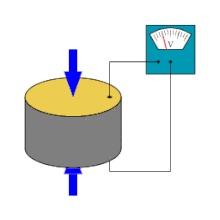As you know, a transducer’s primary function is to change a physical quantity to an equivalent electrical signal. The input in common electrical systems is often the electrical signal; however, a non-electrical signal can be transformed into its equivalent electrical signal by utilizing electrical techniques.
An active transducer is a sort of transducer device that does not require an external power supply to provide output and is capable of converting physical impulses into electric powered signals on its own. Active Transducer is an important product to use in measurement tools. Active Transducers are provided by several Suppliers and Companies, different manufacturers, and a lot of distributers and there are a lot of Active Transducers for Sale on Linquip.
There is a complete list of Active Transducer services on the Linquip website that covers all manufacturer operations. Linquip vendors can assist you with this. Please contact Active Transducer Experts in Linquip to learn more about how to connect with a diverse group of service providers who consistently deliver high-quality products.
Fundamentally, the block diagram of a transducer involves two components: the sensing element and the transduction element. Transducers are classified in different ways. In one of which we have an active transducer and passive transducer.
What is an Active Transducer?
A transducer that converts the quantity of non-electrical to electrical is known as an active transducer. The best instances of nonelectrical amounts are temperature, pressure, and light. Hence, there are various types of active transducers based on the quantity of the non-electrical that we choose.
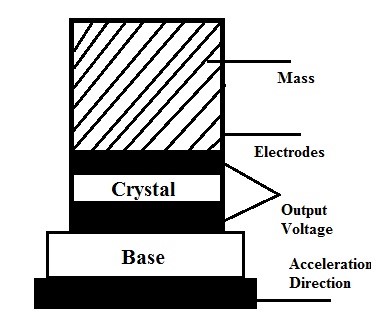
This transducer doesn’t need an extra source. Its design is not complicated, and the resolution is low. The best example of the aforementioned is the PV cell, Thermocouple, Tachogenerator, etc.
An active transducer is a self-generating type transducer that can produce an electrical voltage or current output without utilizing any external power source. These transducers draw the energy demanded for their operation from the measuring system. It is remarkable in the case of active transducers that the output generated is very small; therefore, additional amplification is needed in its case.
Types of Active Transducer
We have three types of active transducers, which are mentioned below:
- Piezo Electric Transducer
- Photo Electric Transducer
- Thermo Electric Transducer
In what follows, we will talk about three types of active transducer.
Piezo Electric Transducer
It is one sort of active transducer, and the primary function of this is to produce an electrical quantity. This electrical quantity is equivalent to the input of the pressure. Three substances that produce a piezoelectric effect are Quartz, Rochelle salts, and Tourmaline. The impact of piezo-electric can be displayed through these three substances.
A piezoelectric transducer is a device that works with the piezoelectric effect to measure variations in acceleration, strain, pressure, force, or temperature by transforming this energy into an electrical one.
The electric voltage generated by a piezoelectric transducer can be readily measured by the voltage measuring tools. Considering this voltage will be a function of the force or pressure applied to it, we can infer the voltage reading force/pressure. In this way, physical quantities such as mechanical stress and force can be measured straight using a piezoelectric transducer.
A piezoelectric transducer comprises a quartz crystal made of silicon and oxygen arranged in a crystalline structure (SiO2). Generally, the primary repeating unit, which we call unit cell, of all crystal is symmetrical; however, it is not in piezoelectric quartz crystal. Piezoelectric crystals remain electrically neutral.
The atoms may not be symmetrically arranged, but their electrical charges are balanced, which means positive charges eliminate the negative charge. The quartz crystal has the unique feature of generating electrical polarity when mechanical stress is applied along a particular plane. Fundamentally, two types of stress are available. One is tensile stress, and the other is compressive stress.
When there is unstressed quartz, no charges generate on it. In compressive stress, positive charges are induced on one side, and negative charges are generated on the opposite side. The crystal size becomes longer and thinner due to compressive stress. In tensile stress, charges are induced in reverse compared to compressive stress, and quartz crystal brings fatter and shorter.
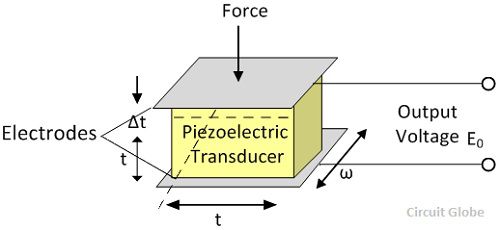
A piezoelectric transducer works based on the principle of the piezoelectric effect. The word piezoelectric is acquired from the Greek word “piezen”, which means to press or squeeze. The piezoelectric effect asserts that when mechanical stress or forces are applied to a quartz crystal, generate electrical charges on the quartz crystal surface. Pierre and Jacques Curie discovered the piezoelectric effect. The rate of charge generated will be equivalent to the mechanical stress rate applied to it.
One of the novel characteristics of the piezoelectric effect is that it is reversible. When voltage is applied to them, they tend to change dimensions along with a particular plane. In other words, a quartz crystal structure is located in an electric field; it deforms quartz crystal by an amount equivalent to the strength of the electric field. If the same design is placed into an electric field with field reversed direction, the deformation will be the opposite.
Piezoelectric Transducer Advantages
The piezoelectric transducers, one kind of active transducer, has numerous advantages. Some of these pros are:
- They do not need any external force
- They have small dimensions, so they are easy to handle and use.
- They are high-frequency response, which means the parameters change quickly.
Piezoelectric Transducer Disadvantages
An active transducer in the form of a piezoelectric transducer has some disadvantages as follows:
- Piezoelectric Transducers are not suitable for measurement in static condition
- They are affected by temperature
- They need an external circuit attached to them since their output is weak.
- It is challenging to give the aspired shape to this material and also wanted strength.
Photo Electric Transducer
Another kind of active transducer is a photoelectric transducer. This transducer’s primary function is to generate an electrical quantity that is equal to the illumination of light input. This transducer works in two states when the light falls on the transducer; then, it produces electrons. Likewise, this transducer produces a current thanks to the attraction of the electrons to the anode.
The photoelectric transducer alters light energy into an electrical one. It is composed of semiconductor material. The photoelectric transducer utilizes a photosensitive element, which removes the electrons when the beam of light absorbs through it.
The discharge of electrons change the property of the photosensitive component. Therefore, the current provokes in the devices. The magnitude of the current is equivalent to the total light which the photosensitive element absorbs.
The photoelectric transducer absorbs the light, which drops on its semiconductor material. The absorption of light stimulates the electrons of the material, and consequently, the electrons start moving. The movement of electrons provides one of the three effects.
- The resistance of the material varies.
- The output current of the semiconductor varies.
- The producing voltage of the semiconductor varies.
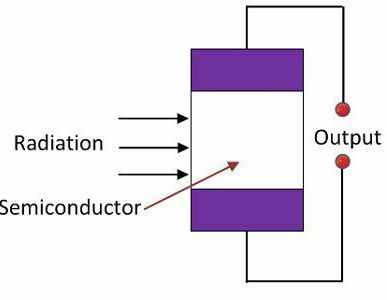
Classification of Photoelectric Transducers
Active transducers in the form of photoelectric transducers are classified into the ways below:
Phot emissive Cell
This kind of transducer converts the photons into electric energy. It is comprised of the anode rod and the cathode plate. The anode and cathode are often coated with a phot emissive material called cesium antimony.
When the light falls on cathode plates, the electrons stream from anode to cathode. The cathode and the anode are sealed in a closed, evacuated opaque tube. When the radiation falls on the sealed box, the electrons begin emitting from the cathode and traveling towards the anode.
The anode is stored to the positive potential. Thus, the photoelectric current begins flowing through the anode. The measure of the current is directly comparative to the intensity of light moves through it.
Photoconductive Cell
The photoconductive cell transforms the light energy into an electric current. It utilizes semiconductor material such as cadmium selenide, Se Ge, as a photo-sensing component.
When the light falls on the semiconductor material, its conductivity enhances, and the material works similar to a closed switch. The current begins flowing into the material and diverts the pointer of the meter.
Photo-voltaic cell
Another kind of active transducer is a photovoltaic cell. when the load is connected to the photovoltaic cell, the current flows into it. Silicon and selenium are utilized as a semiconductor material. When the semiconductor material receives heat, the free electrons of the material move; this phenomenon is identified as the photovoltaic effect. The movements of electrons increase the current in the cell. This current is known as the photoelectric current.
Photodiode
The photodiode is one kind of semiconductor material that converts the light into current. The electrons of the semiconductor material move when the photodiode receives the light energy. The response time of the photodiode is significantly less. It is intended to work in reverse bias.
Phototransistor
The phototransistor converts light energy into electric one. It generates both the voltage and current.
The photovoltaic cell is a bipolar tool which is composed of semiconductor material. The semiconductor material is contained in an opaque box in which the light readily approaches the photosensitive element. The component absorbs light, and the current begins flowing from base to emitter of the device. Then, the current is converted into voltages.
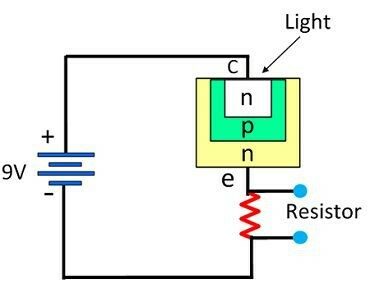
Thermo Electric Transducer
In the domain of active transducers, a thermoelectric transducer produces an electrical quantity equal to the input of the temperature. The best instances of these transducers are Thermistor and thermocouple. In what follows, these two types of active transducers are demonstrated:
Thermistor
The Thermistor is a transducer that can be described as a resistor dependent on temperature. It is known as a thermal resistor and is also known as Thermistor.
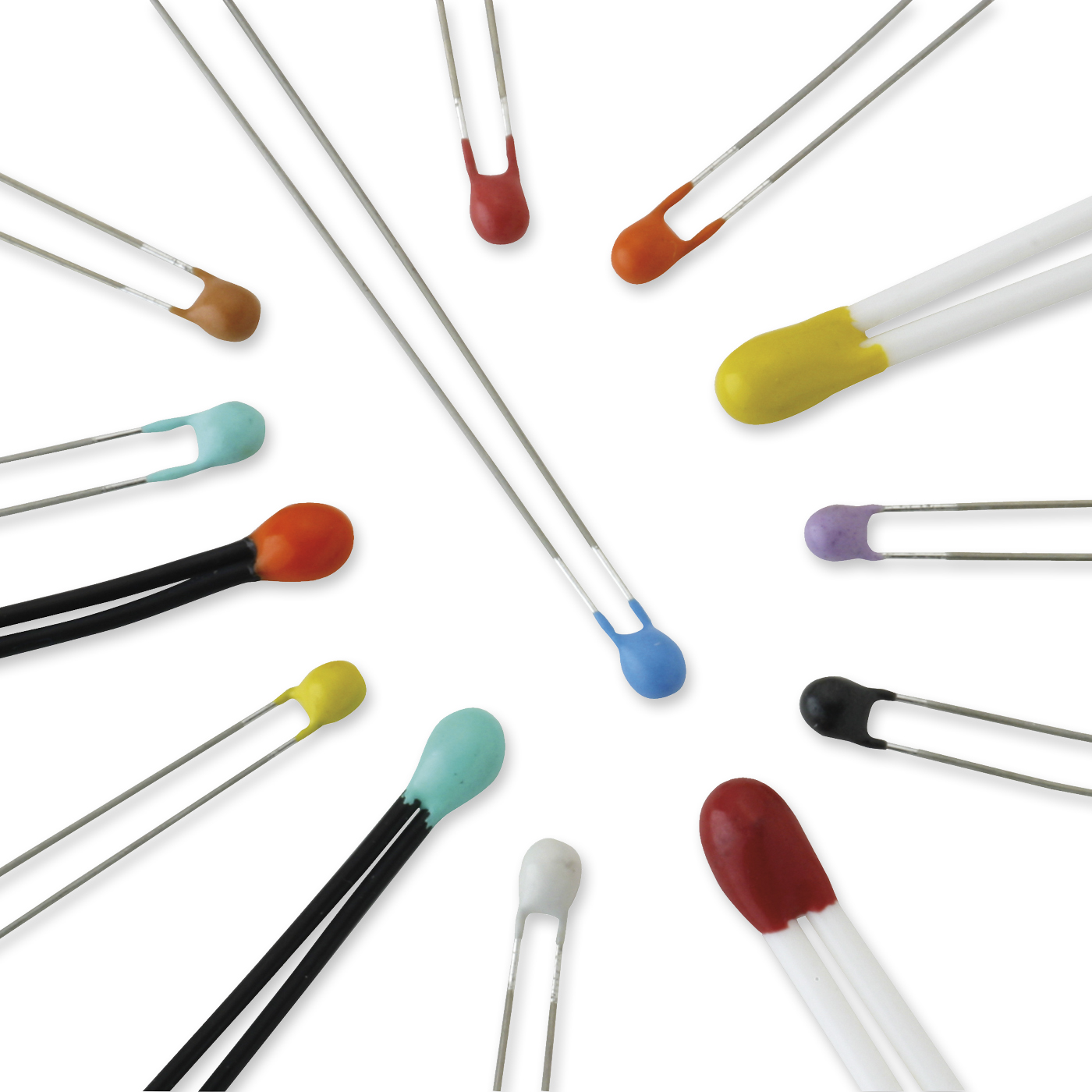
Thermistor’s temperature coefficient is negative because once the temperature rises, the Thermistor’s resistance will decrease. One of its benefits is that it generates stable and quick responses.
Thermistors Applications
Thermistors have various applications. They are generally used to measure temperature as a thermistor thermometer in much different liquid and air environments. Some of the most popular applications of thermistors include:
- It can be used in Wheatstone bridge circuits
- It can be employed as digital thermometers (thermostats)
- It has automotive purposes (i.e. measuring coolant and oil temperatures in trucks & cars)
- It employs role in household instruments (such as microwaves, ovens, and fridges)
- It has the role of circuit protection (for example surge protection)
- It can be used in rechargeable batteries (to guarantee the correct battery temperature is sustained)
- It can be used in measuring the thermal conductivity of electrical materials.
- It is employed in many fundamental electronic circuits.
Thermistor: Principle of working
The main working principle in a thermistor is that its resistance depends on its temperature. The resistance of a thermistor can be measured using an ohmmeter. Suppose we know the exact relationship between how temperature changes affect the Thermistor’s resistance. In that case, we can derive its temperature by measuring the Thermistor’s resistance.
The type of material used in the thermistor determines the amount of temperature changes. The connection between a thermistor’s temperature and resistance is non-linear.
Thermistors are classified into two categories:
- Negative Temperature Coefficient (NTC) Thermistor
- Positive Temperature Coefficient (PTC) Thermistor
Thermocouple Transducer
Another kind of active transducer is thermocouple. This transducer produces an o/p voltage for an equivalent change in temperature at the input. Once the different metal wires are connected jointly in order to make two connections, then that whole arrangement can be known as Thermocouple.
A thermocouple is described as a thermal junction that operates based on the thermoelectric effect. In other words, the temperature difference is converted directly to an electric voltage. A thermocouple is an electrical device for the measurement of temperature.
A thermocouple can measure a broad range of temperatures. It is an uncomplicated, robust, and economical temperature sensor used in different industrial applications, homes, offices, and commercial applications.
According to the applications, various designed configurations of thermocouples are available. They include thermocouple probes, probes with connectors, base wire thermocouples, infrared thermocouples, and just thermocouple wire.
Thermocouple: Principle of working
A thermocouple is comprised of two plates of various metals. Both plates are attached at one end and form a junction.
The junction is located on the element or surface where we want to measure the temperature. This coupling is called a hot junction. Moreover, the second end of the plate is maintained at a lower temperature (room temperature). This junction is called reference junction or cold junction.
The temperature variation between the two different metals induces the potential variations between two points of the thermocouple plates, according to the Seebeck effect.
If the circuit is closed, a minimal amount of current will flow through the circuit. The voltage measured by the voltmeter, which is connected to the circuit, is a function of a temperature variation between two junctions. Therefore, by measuring the voltage, we can determine the temperature of the hot junction.
Download Active Transducer PDF
Buy Equipment or Ask for a Service
By using Linquip RFQ Service, you can expect to receive quotations from various suppliers across multiple industries and regions.
Click Here to Request a Quotation From Suppliers and Service Providers
Read More In Linquip
- Types of Sensors Detectors/Transducers: An Entire Guide
- Resistive Transducer: Working Principle & Example
- Photoelectric Transducer: Application & Working Principles
- What Is a Pressure Transducer? A Simple Descriptive on the Definition, Working Principle and Considerations
- Important Detailed Information About The Types of Transducers
- Pressure Transducer: Definition, Working Principle, and Types
- Transducer vs. Sensor: Basic Differences & Advantages of Them
- Temperature Transducer: Definition, Working Principle, and Types
- Piezoelectric Transducer and Its Impressive Applications in Electric Circuits
- What are the Main Benefits of an Ultrasonic Transducer?
- All You Need to Know about Transducer
- What is a Fuse Wire & How Does It Work?
- What is Electrical Identification? (2022 Ultimate Guide)

